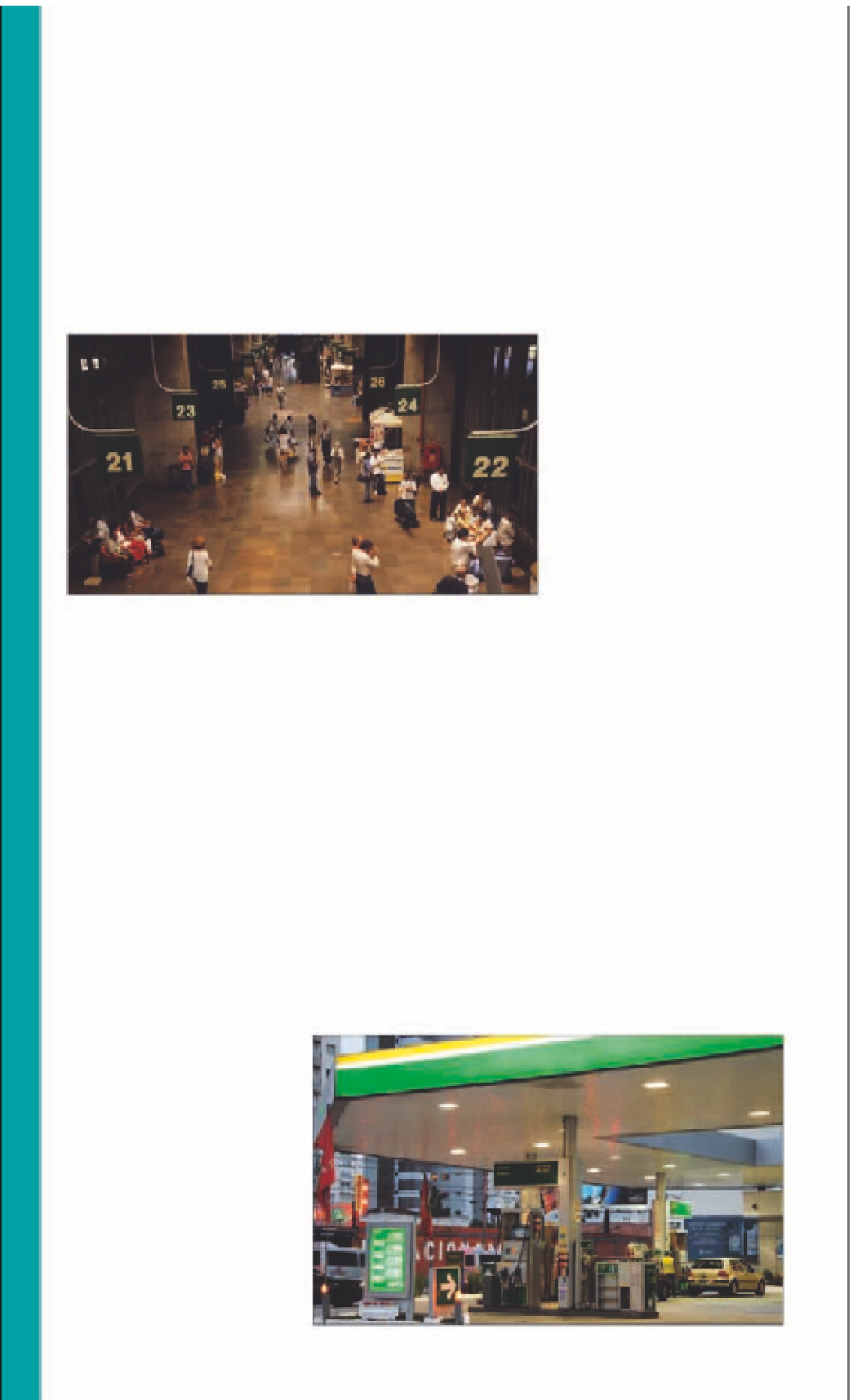Travel Reference
In-Depth Information
Bus & Car Travel
Bus and car travel is a challenge in Brazil, both because
of the distances, and because of the often poor quality
of the roads. Brazil possesses a total of 932,000 miles
(1.5 million km) of federal, state, and local roads but
only 49,000 miles (79,000 km) are paved and in decent
condition. Intercity bus travel is well organized and
most routes offer efficient and comfortable express
services. Though car rentals are widely available, given
the distances and the high cost of gasoline, a car is not
really advisable for longer trips, but it is a convenient
way to explore attractions closer to the city.
air-conditioned 4WDs. Rental
agreements can be with full
or partial insurance, with
unlimited driving or with a
per kilometer charge. In terms
of price, a 4-door mid-size
sedan with air conditioning,
unlimited driving, and full
insurance will cost about
R$150 (US$75) per day in a
larger city. In smaller towns
and remote areas, prices go
up by 50 to 100 percent. It is
a good idea to check with
locals about the condition of
the roads you plan on taking.
GAS STATIONS
Cars in Brazil run on either
gasoline or alcohol, but car
rental agencies normally rent
only gasoline models. Service
stations selling gasoline are
more common, especially
in remote areas. On long-
distance road trips, service
stations may be few and far
between, so ensure that the
car is in good condition.
Always be well prepared with
some cash, water, enough car
fluids, a good spare tyre with
tools, and a flashlight.
DRIVING IN TOWNS
Busy
rodoviária
(central bus terminal) in São Paulo
BUSES
CAR RENTALS
Brazil has an excellent
network of long-distance
buses which makes traveling
around the country easy and
economical. Intercity buses
leave from a central station,
called a
rodoviária
, usually
built on the outskirts of the
city. Buses are operated by
numerous private companies,
but prices are standardized,
and very reasonable. Several
categories of buses operate
on longer routes. Regular
buses (
ônibus comum
) some-
times do not have air con-
ditioning, so ask.
Comum
com ar
are regular buses with
air conditioning. The
execu-
tivo
bus is more comfortable,
its chairs wider and equipped
with footrests. The best buses
for overnight trips are known
as
semi-leito
or
leito
.
Semi-
leito
have seats that recline
almost horizontally and have
large footrests.
Leito
buses
offer a fully horizontal bed-
like seat. Both normally offer
onboard refreshments,
blankets, and pillows. Nearly
all buses have onboard
bathrooms. Buy your tickets
from the
rodoviária
ahead of
time, especially on holidays.
All major cities and most
smaller cities and towns offer
car rental services, such as
Avis
and
Localiza
. Car rental
offices, known as
locadoras
,
can be found at every airport
and in most towns. Foreigners
need to show a valid driver's
license from their home
country, state, or province,
their passport, and a major
credit card. It is also a good
idea to carry an International
Driver's Permit (IDP). A
wide variety of cars are
available in Brazil, from small
economy models with no
air conditioning, to large
Driving in Brazilian towns
and cities can sometimes be
a frustrating experience.
Anytime after about 9pm,
especially in Rio and São
Paulo, drivers begin to treat
red lights as strictly optional.
Be especially alert at inter-
sections at night (even as a
pedestrian). Often the driver
running the red light won't
even slow down, because
of the risk of robberies at
isolated intersections.
Posto de Gasolina
(gas station) in Rio de Janeiro






































